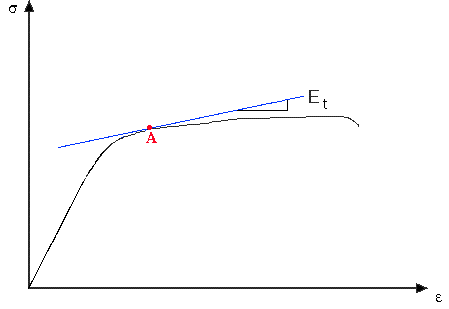Tangent Modulus: Tangent modulus is defined as the slope of a line tangent to the stress-strain curve at a point of interest. Tangent modulus can have different values depending on the point at which it is determined. For example, tangent modulus is equal to the Young's Modulus when the point of tangency falls within the linear range of the stress-strain curve. Outside the linear elastic region, at point A shown for example, tangent modulus is always less than the Young's modulus. Tangent modulus is mostly used to describe the stiffness of a material in the plastic range, and it is denoted by Et.
Ramberg-Osgood Equation: It is used to describe the stress-strain relationship in the yield region of the stress-strain diagram. It uses three different properties of a material, i.e., E - Young's modulus, s0.7 - stress value corresponding to the secant modulus of 0.7E, and n- shape factor describing the shape of the stress-strain diagram in the yield region.
The Ramberg-Osgood equation is used in inelastic buckling analysis of columns and plates.


